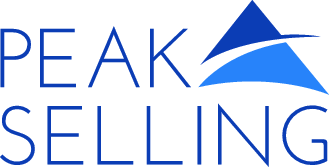Are you Proficient at Selling Value in Both Tangible and Intangible Terms?
Posted on 09/17/2013 in Value Selling Skills
Many top sales executives believe that few of their salespeople sell well on value. Does this surprise you?
It doesn’t surprise me because I see firsthand that many salespeople we work with find it very difficult to effectively utilize value selling with their customers. In particular, they have difficulty quantifying and communicating the value in both tangible and intangible terms.
If you feel that you (or your sales team) can improve selling on value, then this blog is for you (consider also reading an earlier blog "Three Principles of Value Selling”). Also visit our Selling on Value Not Price Sales Meeting Kit page. Let’s first highlight two key premises that will make it easier for you to sell value.
Premise #1: You already use value selling in your personal life when you make buying decisions. There are numerous examples but let’s use two examples that we can all relate to.
Imagine the last time that you bought a car. What factors were important to you in making the decision? If it was miles per gallon so that you could reduce your costs of fuel, you could easily calculate how much money you would save on fuel expenditures compared to your current car. If it was to reduce the cost of service/maintenance, perhaps you selected an auto dealer that provided free service for the first three years. Again, you could calculate how much money that would save you. Or, perhaps you upgraded to a safer vehicle that you could use with your insurance company to justify a lower annual insurance premium.
As a second example, imagine that you’ve recently decided to buy a tablet rather than a new laptop computer. What convinced you to do so? Was it the lighter weight (which is a big benefit for someone like me who flies a lot)? Was is the fact that your tablet allowed you to use one device in place of two or more other devices, such as negating the need for an e-book and a laptop? Was it the startup speed? Clarity of the screen? Ease of use? I’m sure that you can think of other advantages of a tablet.
Notice in the above two examples that you could often quantify the savings/gains in actual dollars or improved speed (time savings). Let’s call these factors "tangible value.” This tangible value was used by you-as-customer to select your preferred car or preferred tablet.
And, in cases where you couldn’t necessarily quantify the value, the other benefits of the product were quite compelling. Lighter. Safer. Easier to use. Let’s call these factors the "intangible value.”
Premise #2: Now, apply what you already know about value selling but express it from your customer’s perspective. When your customers make buying decisions based on value, they are doing exactly the same thing that you do when you make buying decisions as a customer. They are assessing both the tangible and intangible value that your product/service will provide to them.
So, do exactly the same thing when you prepare your value proposition to a customer. Quantify the cost savings or time/productivity gains that your customer will experience by using your product or service. Highlight the two or three strongest benefits for the customer.
Average sellers don’t do this. Instead, they take a product-centered approach and fail to communicate clearly to a customer the tangible and intangible value that a customer will receive by using their product. Don’t make this mistake.
